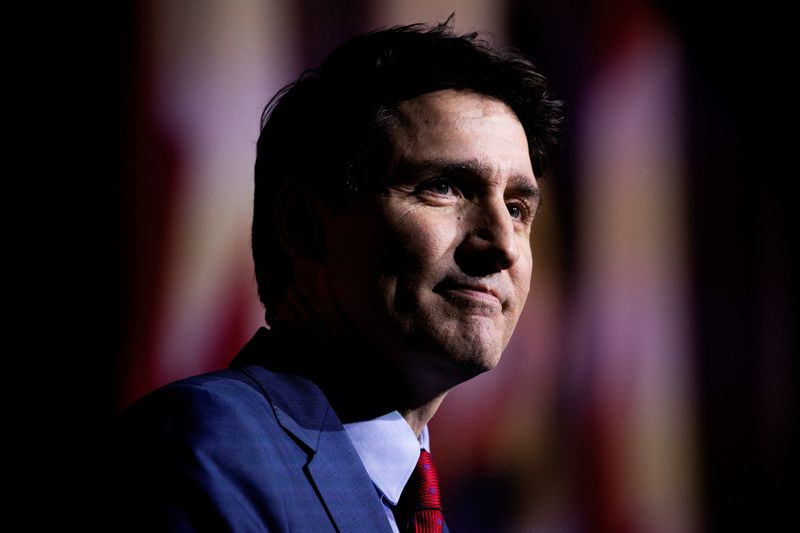
By Jamie McGeever
ORLANDO, Florida (Reuters) -The end of the Federal Reserve’s interest rate-cutting cycle is suddenly in sight, and a complete U-turn with rate hikes next year can no longer be ruled out.
The Fed lowered the fed funds rate by 25 basis points on Wednesday to a target range of 4.25%-4.50%, as expected. But if ever there was a “hawkish cut”, this was it.
The market reaction was swift and powerful: the dollar soared to a two-year high, stocks slumped, and Treasury yields surged. Markets can overshoot on days like these, but there was plenty here to back up the moves, whether investors were looking at the Fed’s statement, its revised projections or Chair Jerome Powell’s press conference.
First, the decision to cut wasn’t unanimous, as Cleveland Fed President Beth Hammack dissented. And Powell called the 25 bps cut a “closer call” than recent decisions. He also said that monetary policy is now “significantly less restrictive” and “significantly closer to neutral”.
Additionally, policymakers significantly raised their median 2025 inflation outlook to 2.5% from 2.1%, upped their view of the long run neutral rate of interest again to a six-year high of 3.0%, and halved the number of projected rate cuts next year to two.
While the Fed’s new projections are still pointing to 50 bps of easing next year and 100 bps by the end of 2026, the rates markets are having none of it. They’re now pricing in only 35 bps of cuts next year and that’s pretty much it. No more.
In short, the market is essentially calling the Fed’s bluff.
That’s largely because of the head-scratching logic behind the Fed’s 2025 outlook: policymakers expect inflation to be much higher than they had previously thought, yet they’re still planning to cut rates. It’s a difficult circle to square, as Powell discovered in his press conference.
The stance might be more defensible – and less jarring for markets – if growth and employment were also cratering. But they’re not. The Fed’s projections for both barely changed, with economic activity and the labor market expected to remain strong into 2026.
NEVER RULE ANYTHING IN OR OUT
Only one year after Powell’s dovish pivot, markets may now be considering the possibility of a turn the other way.
Torsten Slok, chief economist at Apollo Global Management (NYSE:APO), was one of the first on the Street to float the idea that interest rates may actually rise next year. Wednesday’s developments have only reinforced his view that the economy is strong and thus rates will need to stay higher for longer.
“I believe there is now a 40% probability that the Fed will hike in 2025,” Slok said after the meeting.
It’s not an outlandish call, considering interest rate markets are anticipating that the Fed will begin an extended pause at its next meeting that will last well into 2025. The next quarter point rate cut is not fully priced in until September.
Of course, a lot can happen in nine months, especially given that President-elect Donald Trump is returning to the White House in January. If his proposed trade policies and tariffs are deployed, inflation could heat up, complicating the Fed’s job even more.
Economist Phil Suttle reckons this could force the Fed’s hand.
“My view remains that the next move from the Fed will be a hike in July, after a tariff-driven rise in inflation in the second quarter,” he wrote on Wednesday.
True, financial markets are not explicitly pricing in a U-turn from the Fed, and Powell on Wednesday dismissed the prospect as an unlikely outcome.
But the dollar is up 8% since the Fed’s first rate cut in September, and Treasury yields have risen 80 basis points. That suggests some segments of the financial universe are already anticipating tighter policy.
As Powell also said on Wednesday when asked about a possible rate hike next year: “You don’t rule things completely in or out in this world.”
Given how lousy the market has been at predicting Fed policy over the last few years, keeping an open mind is probably a very good idea.
(The opinions expressed here are those of the author, a columnist for Reuters.)
(By Jamie McGeever; Editing by Michael Perry)

































